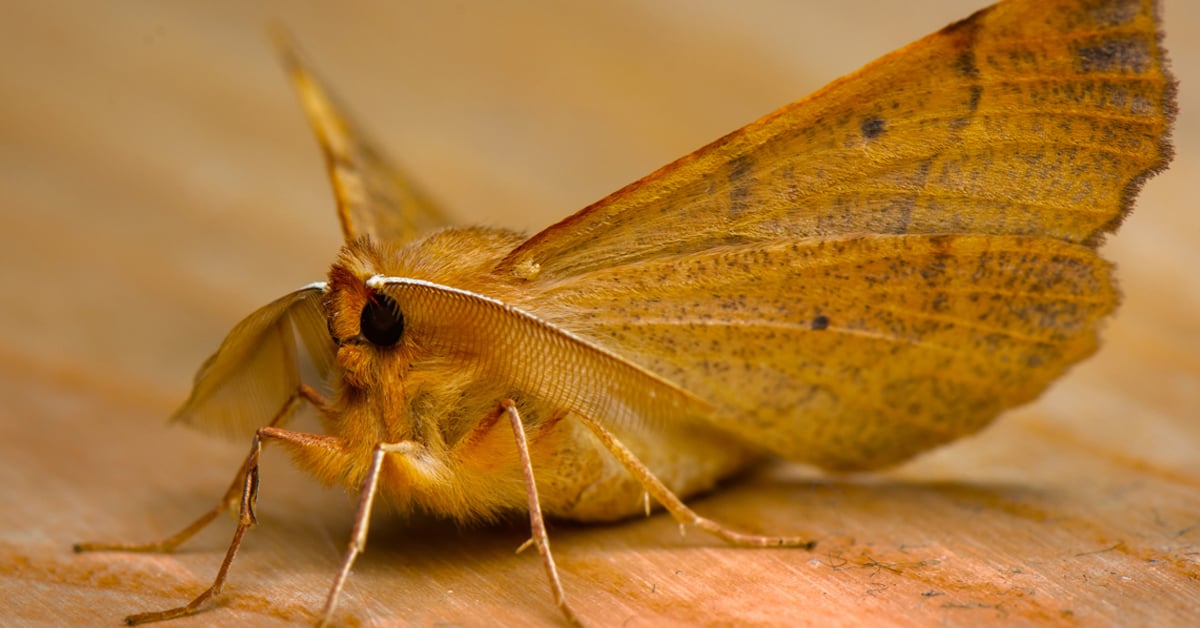HOW PANTRY PESTS ARE GETTING INSIDE UNION COUNTY HOMES

You’ve probably heard the joke, “What’s worse than finding a worm in your apple? Finding half a worm!” It’s funny to be sure, but what isn’t funny is actually finding pests in your food sources. There aren’t many things more unpleasant than discovering that the food you plan to eat, or worse, have already eaten, has been infested with bugs.
Here in Union County, we encounter three main pantry pests: flour beetles, Indian meal moths, and sawtooth grain beetles. Below we’ll help you identify each one, determine how they’re getting into your home, learn why you don’t want them in your home, and find out the best ways to prevent them!
Flour Beetles
As their name suggests, flour beetles feed on flour and cereal products. These pests are commonly found in homes, grocery stores, and food processing plants.
There are two main species of flour beetles, the confused flour beetle and the red flour beetle, but they look so similar that it is very difficult to tell them apart. Both have flat, oval-shaped bodies that are reddish-brown in color and shiny. They also both have wings and antennae.
Indian Meal Moths
Indian meal moths feed primarily on dried fruits, grains, seeds, nuts, chocolate, bird seed, dog food, and powdered milk. These pests are often found in grocery stores.
Indian meal moths have gray bodies and copper colored markings on the outer parts of their wings.
Sawtooth Grain Beetles
Sawtooth grain beetles eat flour, cereal, nuts, pet food, bird seed, spices, and even drugs and tobacco products. They are commonly found in homes and commercial facilities.
Sawtooth grain beetles have long, flat bodies and are typically brown in color. These pests get their name from the tiny, tooth-like projections located just behind their head.
How They Get Into Your Home
As mentioned in their descriptions, all three of these pantry pests are commonly found in homes, grocery stores, and commercial facilities such as food processing plants. Pantry pests won’t typically enter your home by crawling inside from your yard. Instead, these pests enter your home in the food you bring home from the grocery store. These pests typically invade food products during processing and are then shipped to the grocery store, and eventually end up inside your home.
It’s most likely that a food product will be infested with the eggs or larvae of pantry pests which will eventually grow into adult pests. Once adults, they will lay more eggs and your pest problem in your home will continue to grow. The life cycle of a pantry pest can take anywhere from a few weeks to a year depending on temperature and other conditions. This means that these pests can become a year-round problem if left untreated!
Enlisting the help of the pest control experts at Viking Pest Control will help protect your home from pantry pests throughout all four seasons!
Why You Don’t Want Pantry Pests in Your Home
While they are not known to carry or transmit disease, pantry pests are more than just a nuisance. Once they invade your home, they can cause you a lot of stress and cost you money in food waste.
No one wants to have to worry about contaminated food every time they pull something out of your pantry to cook, but once you find pantry pests once, you’ll need to check for them in other foods as well.
If you find contaminated food products, you’ll need to throw it away. If this begins happening frequently, the cost of food waste will quickly add up.
Don’t leave a pantry pest infestation up to chance! Cont the professional exterminators at Viking Pest Control. We have the expertise to carefully inspect, locate, and eliminate all of your pantry pest problems! Contact us at 800-618-2847 to learn more about our pantry pest treatments, or request a fast, free quote online today!










